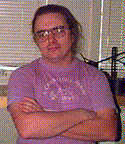BIND developer going commercial
Internet Software Consortium eyes sendmail model in search for solvency
|
|
BIND developer going commercialInternet Software Consortium eyes sendmail model in search for solvency
|
|
Mail this article to a friend |
A little-known Silicon Valley company is looking for investors and, if it can pull some together, its prospectus would make for interesting reading. The company's software is useful and ubiquitous -- in fact, the Internet as we know it wouldn't work without it. It has close to 100 percent market penetration and a good distribution channel -- all the major Unix vendors port it to their respective operating systems.
There's only one catch: The software is given away, and the company really doesn't care about making money.
Changes are afoot at the Internet Software Consortium (ISC) -- best known as the people who maintain the BIND (Berkeley Internet Name Domain) implementation of the Internet's Directory Naming Service (DNS). Long run as a kind of charity, staffed with workers from Paul Vixie's consulting firm, Vixie Enterprises, and living off of donations and sporadic contract work from operating system vendors, the ISC has just hired a new executive director chartered with making BIND development viable. And though Vixie is loathe to use the words "for profit," he says it is "likely" that the ISC "will not continue to pursue 501(c) [non-profit] status." In other words, the ISC is changing from a charity to a Silicon Valley company.
The sendmail thing
When Eric Allman formed Sendmail Inc. last March and announced plans to
sell enhancements to his ubiquitous freeware, called Sendmail Pro, Paul
Vixie saw that Allman's "hybrid" business model -- where services and
software additions to the basic sendmail package are sold to pay for
development of the free software -- could also apply to BIND. Both
products are essential to the Internet. Both have a dominant market
presence. And both are cryptic to the average user.

Paul Vixie |
The ISC's new executive director, David Conrad, formerly with APNIC, says that while charging for BIND is not even "within the realm of discussion at this point," the way BIND development is bankrolled is about to change. "Right now the ISC is essentially unviable," he says, "and I see my role as trying to turn it into a viable organization."
Making BIND viable means relying less on contracts and hand-outs from big vendors (like Sun, Hewlett-Packard, Digital, and IBM -- who are collectively kicking in about $500,000 for the ISC's development work on Secure DNS) and generating revenue from BIND's large installed base. "Instead of going for a small number of very large bucks," says Conrad, "we'll go for a large number of very small bucks."
Allman, for his part, says that the ISC's move to for-profit was, to a certain extent, "inevitable." But he says that for "infrastructure software," such as BIND and sendmail, "it's going to be necessary to have an open source version out there, more or less forever."
What, precisely, the ISC plans to sell has not yet been determined. The company maintains three software packages: BIND, InterNetNews (INN), and an implementation of the Dynamic Host Control Protocol (DHCP). But BIND, the reference implementation of the software that most computers on the Internet use to find each other, clearly holds the most potential.
Show me the market
Vixie, who will remain the technical architect of BIND, thinks there is
a market for ease of use improvements to his software. He envisions,
perhaps, a subscription service, where the latest patches and
improvements to BIND are shipped directly to customers. The ISC is also
thinking of selling graphical user interface enhancements, installation
tools, documentation, and even technical support. "Right now you have
to be pretty far out in the intellectual food chain to use our stuff,"
observes Vixie. "There's a large and growing segment of the Internet
that doesn't know this stuff."
Providing an up-to-date port of BIND for the various Unixes would be a useful service, notes Cricket Liu, co-author of the book DNS and BIND. "At this point, I think a lot of people have given up on running vendors' versions of BIND," he says. People who want to run the latest version of BIND (8.1.2), which is not yet available from any major vendor, must compile the ISC software for their particular version of Unix. Says Liu, "the minute they compile it and run it on their system, that piece of software is no longer supported by anyone."

David Conrad |
But while Liu sees a need for up-to-date implementations of BIND, he's not certain that ISC should bet the farm on it. "I think that adding software into the mix could add a little bit to their [the ISC's] revenue stream, but I wonder if that would be enough to sustain them. What they really need to be paid for is the bulk of what they do: BIND development."
But Vixie maintains that the ISC has already tried that route. "We just didn't get the kind of donations that we thought we were going to get," he says.
So what is going to change? Vixie and Conrad are unequivocal: BIND will always be free. The code will remain open. But one day, nobody knows precisely when, the ISC will begin to sell value-add products on top of their free offerings.
INN at risk
InterNetNews could be more seriously affected. Because so many vendors
have developed their own news server software, the reference
implementation maintained by the ISC is "not helping very much,"
according to Vixie. Though there are no plans to drop it at the moment,
"INN, frankly, is at risk," he says.
In the meantime, Vixie and Conrad say they're shopping around for so-called "angel" investors, who are willing to sink their money into a company where writing viable software is more important than an exit strategy.
Users seem to like the hybrid business model -- as long as the core
software remains free. "This, in my opinion, is good," says Stephen
Harris, a system administrator with VNU Business Publications in
London. "It allows techies like me to keep getting better code free,
but also allows these powerful tools to be maintained by less techie
admins, by use of the chargeable additional tools."
![]()
|
|
Resources
If you have technical problems with this magazine, contact webmaster@sunworld.com
URL: http://www.sunworld.com/swol-07-1998/swol-07-bind.html
Last modified: